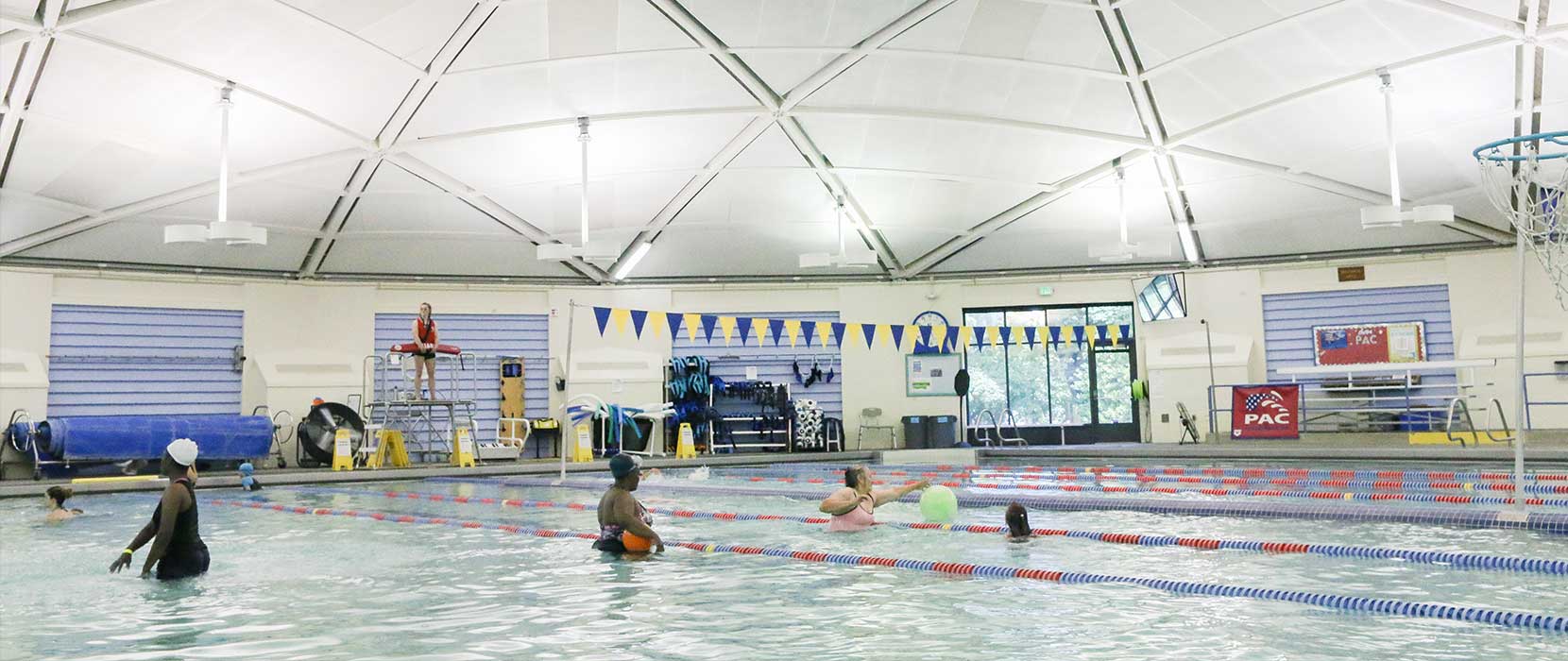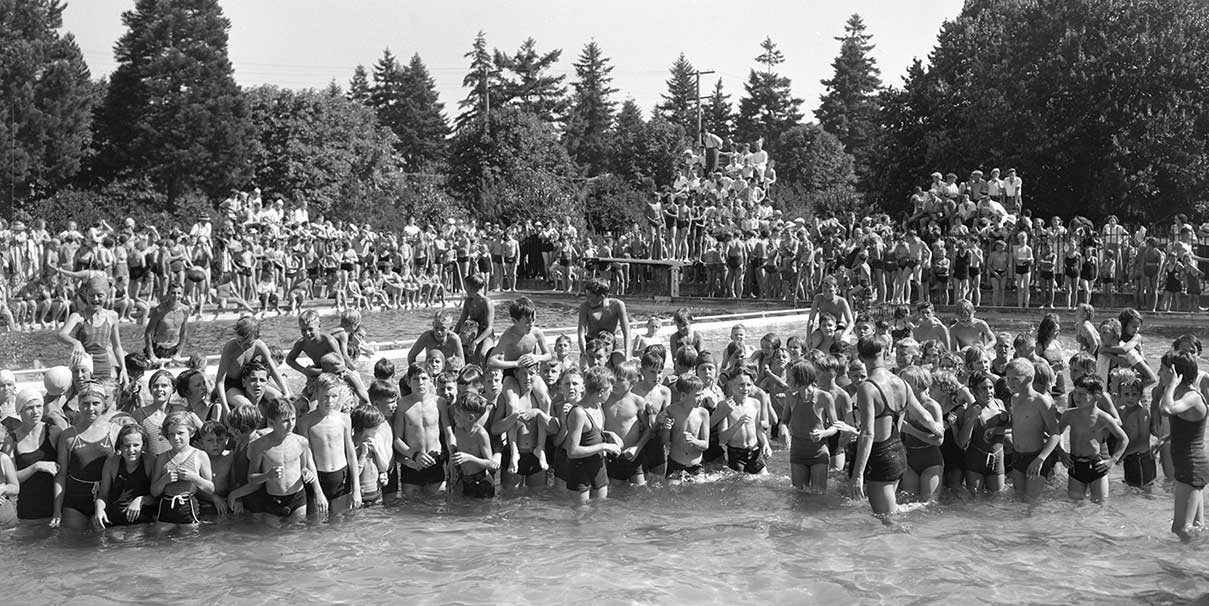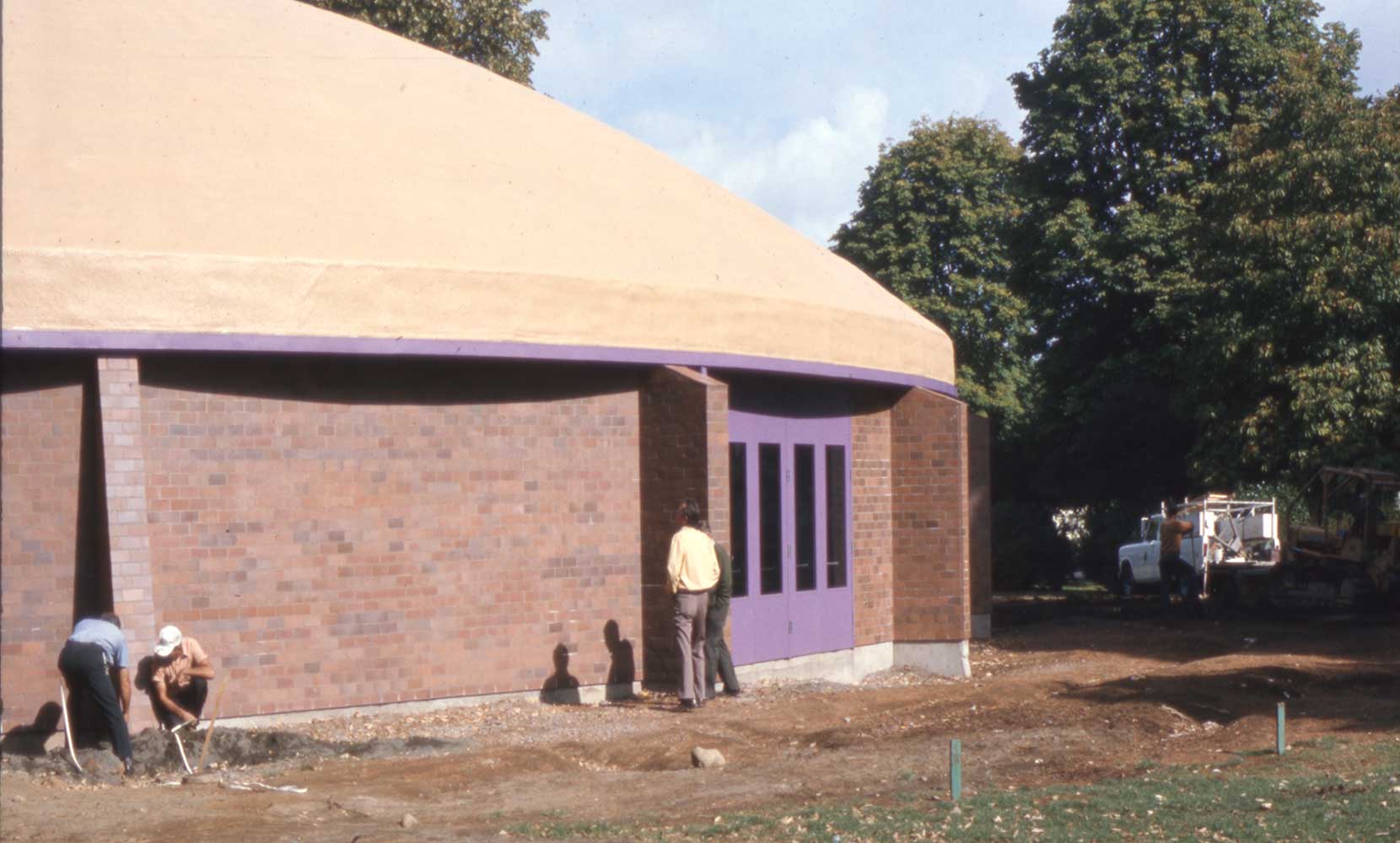
Portland Magazine
March 1, 2023
When Columbia Pool—North Portland’s only indoor public pool—closed its doors in 2020, a group of UP researchers set out to understand the pool’s context and history—its story.
Story by Emilly Prado

PUBLIC POOLS EVOKE a familiar scene: lap swimmers slicing through water, slick tile underfoot. Perhaps the shouts of children playing Marco Polo bounce around the space, competing with the “one, two, one, two” of a water aerobics instructor or the trill of a lifeguard whistle.
These details have a universal quality about them—we know community pools provide access to fitness and instruction in potentially life-saving skills. What’s harder to measure are the intangibles—the qualities that make a pool unique, for instance, or the sense of belonging that a pool can create through its programs.
When Beatriz Itzel Cruz Megchun, assistant professor of design and innovation in UP’s Pamplin School of Business, heard the news of Columbia Pool’s closure, she and her students started asking questions. In her Design Thinking class, she often has students focus on complex business problems, but in this instance, they trained their eyes on a valued community space.
What did Columbia Pool mean to its community? What would be lost without it? How could they convey this meaning to the decision-makers?

City of Portland (OR) Archives, A2009-009.1232
BUILT IN 1927 as an outdoor pool, Columbia Pool became Portland’s first indoor facility in 1975, following renovations that included the construction of a roof that offered year-round access. The expense of fixing the roof is, in part, why it remained closed after COVID-19, even as policies restricting indoor gatherings were relaxed. Located about a mile and a half from campus, in one of Portland’s most diverse neighborhoods, Columbia Pool was UP’s nearest pool.
Through UP-community liaisons, Design Thinking students connected with community members who were rallying to save the pool.
Mary-Margaret Wheeler-Weber, vice chair of the Portsmouth Neighborhood Association, got involved with the movement to save the pool when the closure was first announced. She’d taken swim lessons there as an adult, but her advocacy grew out of an urge to support her neighbors.
“We are a community with a lot of residents who have been historically underserved by government services and continue to be underserved. That’s what got me involved—my sense of righteous indignation. And then, as it turns out, it’s an incredibly popular resource for a lot of different communities,” Wheeler-Weber said.
UP is among those communities. Cruz Megchun noticed some fathers and brothers from the Congregation of Holy Cross promoting advocacy efforts for the pool on campus, “not as an institution but as people who care about the community,” as she recalled.
THIS IS NOT the first time Cruz Megchun has involved the community in her academic interests.
She grew up in Mexico City and considers community collaborations to be one of the pillars of her scholarship and the inspiration behind her personal interests. Her first social project—using public spaces for equitable art access in poor communities of Culhuacanes—was with the Ministry of Culture of Mexico City when she was just 15 years old. As a researcher, Cruz Megchun eventually began documenting her work, conducting social projects centered on themes of belonging, collective memory, and place-making in many countries, before coming to the United States to teach five years ago.
With her Design Thinking students, she interviewed 15 individuals who used Columbia Pool, ranging in age, race and ethnicity, ability, and socio-economic background. Among these community members were a group of retired women, ages 60–90+, who regularly attended water aerobics; physically active people who used the pool for fitness (some in this group were UP faculty, staff, and students); some interviewees were able-bodied and some were people with disabilities; immigrant families; families living in poverty; families with young children learning to swim; and more.
Every community member’s story was unique, but student researchers were able to find a throughline in the narratives: the Columbia Pool mattered. It mattered because it offered everyone a sense of belonging and empowerment within their community.
“Families of refugees are facing so many challenges to exist,” Cruz Megchun said, noting one of countless stories that resonated with her. “For them, they loved the swimming pool because it was a place where they were equal.… In another interview [a mother] was saying, ‘I need to make sure that my kid has many friends because I’m his only family. So if I’m gone, that’s it. He’s going to be lonely. So, I need to make sure that I build a community here so then he knows that he’s not alone.’”
THERE’S A SILVER lining to this story. A new North Portland Aquatic Center (NPAC) is in the works. While the location is still to be determined, costs are estimated at approximately $50 million, and it could take between five and 10 years to complete. Plans may include an Olympic-sized lap pool, therapy pool, spray and play features, and reservable rooms, among other features.
Wheeler-Weber thinks the new Aquatic Center will be excellent, but expressed concerns about the timeframe. “If you look at having closed Columbia Pool without this new Aquatic Center even being on the horizon, you’re talking about generations lost.… The difference between an eight-year-old and a 13-year-old, that’s the difference between being safe around water, comfortable around water, and being at risk around water. And if you think about a 70-year-old, the difference between 70 and 75, that’s the difference between having flexibility, having movement in your life, and not having that. For the university [who lost access to a campus pool in 2017], five years is a generation of students.”
Wheeler-Weber and fellow advocates continue to express concerns about equity. Besides the regular pool community, there was also a swim program in development with Rosa Parks Elementary School to combat the disproportionate rates of drownings among Black and brown children. And while the Portland Parks and Recreation website notes the closest pools are Pier Outdoor Pool, Peninsula Outdoor Pool, and Matt Dishman Indoor Pool, for constituents who rely on public transit, the time and cost of traveling the distance poses a barrier. Moreover, the community, the heart of Columbia Pool, is in Portsmouth, not these other neighborhoods. Wheeler- Weber would like for the pool to be an open-air pool in its current location.

THE QUALITATIVE RESEARCH by UP students—a collection of community testimonials—continues to bear fruit in Portsmouth and beyond. Cruz Megchun and Wheeler-Weber reconvened after the UP research project’s culmination to present their findings and documented stories in a talk titled “Columbia Pool, Community Space, and Community Healing: The Perils and Promise of North Portland Aquatics.” Meanwhile, Cruz Megchun was selected from a pool of 92 candidates to serve alongside 17 other individuals on the NPAC Project Advisory Committee. She hopes this is just another step in an unfolding community and a Design Thinking project she can continue at the University, one where she can continue to involve student voices. “I’m a dreamer,” Cruz Megchun said. “This is a really great moment for the university, and any institution, to reflect what we are standing for. I hope that academic institutions become a place where the knowledge we produce does have an impact on the society. We are part of the community.”
EMILLY PRADO is an award-winning journalist and DJ based in Portland, Oregon. Her debut essay collection, Funeral for Flaca, was a winner of a 2022 Pacific Northwest Book Award.
University of Portland
5000 N. Willamette Blvd.,
Portland, Oregon 97203-5798
503.943.8000
This website uses cookies to track information for analytics purposes. You can view the full University of Portland privacy policy for more information.
